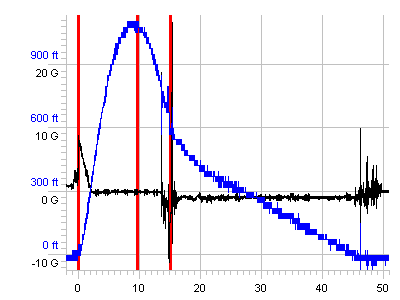Deimos 2
The Deimos-2 Systems Test Vehicle Programme was conceived as a way of flight testing an analog of the actual hybrid powered Deimos-2, just to ensure that the vehicle was stable during flight, and to provide experience and feedback with various payload configurations and recovery configurations. To this end, the programme was a resounding success, with 3 low altitude flights being carried out in 1999. The feedback from these flight tests was then fed back into the work on the main Deimos-2 rocket to enable any modifications to be carried out (e.g. payload configuration and access).
| Flight Test | Date | Test Purpose | Successful Launch | Successful Recovery |
| #1 | June 1999 | Stability Test | Yes | Yes |
| #2 | August 1999 | Recovery Test with extended recovery bay | Yes | Yes |
| #3 | November 1999 | Payload Test | Yes | Yes |
Flight test 1 was merely a stability test, to ensure that the simulations that had been carried out during the design phase were correct.
Flight test 2 added to the flight testing of the stability with an extended recovery bay, to evaluate a different recovery configuration.
Flight test 3 added to the flight testing of the stability and the recovery with a larger payload bay with a number of altimeters.
| General Specifications | |
| Diameter | 6 inches (150mm) |
| Length | 14 feet (4.2m) |
| Recovery | Parachute at apogee |
| Fin Geometry | 3 Clipped Deltas |
| Nosecone | Tangential Ogive |
| Motor | |
| Motor Type | AeroTech Solid Rocket Motor Cluster |
| Total Impulse | 3240 Newton seconds |
| Nozzle | Cast Phenolic |
| Burn Time | 3.5 seconds |
| Avionics & Payloads | |
| Avionics | |
Flight Data from the 3rd Deimos-2 Systems Test Vehicle rocket flight.
(Note: the data is taken directly from the R-DAS Flight Computer data carried onboard the Deimos-2 STV rocket - sampled at 200 Hz)

